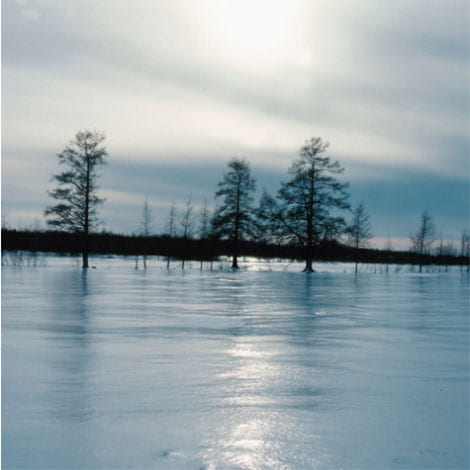Asked By: Beth of Franklin, PA
A: Ice is fun—but it can be dangerous business.
Winter brings cold weather and snow to your pond or lake, as well as a perfect layer of ice for skating, ice fishing, snowmobiling and more. You may want to get out there and play, but it's important to know whether your ice is safe and strong or a potential hazard.
Here's how to determine whether the ice on your pond is thick enough and safe for wintertime fun.
1. Check Its Temperature, Formation
After about two to three weeks of freezing temperatures, a solid sheet of ice will begin to form on your pond or lake. But low temps aren't the only thing that influence ice formation. Water currents, wind and snow coverage will also make a difference in the integrity of the frozen surface. So once the weather and temperatures stabilize after several weeks, you can venture onto the ice and inspect its thickness.
2. Check Surface for Quality
Ice quality matters. When you inspect the ice, you can visually gauge its quality by looking for bubbles, trapped snow and cracks. You can also determine its quality by color, as a solid blue ice sheet is much stronger than a white brittle layer, which is caused by air pockets and other flaws. Of course, you will want to avoid going on the ice if you see areas of moving water, slush, or depressions in the snow.
In addition, if you've left your aeration system running while the ice has been forming, the ice layer will have air pockets—and be unsafe for winter recreation.
3. Verify Its Thickness
You've given the water time to freeze and the ice time to form, and you've ensured the quality of the ice sheet's surface. The next step is to verify its thickness. You can either drill or cut samples—but make sure you do so in multiple locations as you work your way toward the center of the pond as the water won't necessarily freeze evenly.
In general, a layer of ice less than
3-inches is too thin for most people to walk out on. It may be able to hold up lighter people or small animals but can easily crack. So if you plan to have a group of people on the pond or want to take your snowmobile out on your lake, an ice formation of 6 to 8 inches minimum is ideal.
4. Be Patient, Stay Safe
Winter recreation on an ice-covered pond is fun—but be patient and use extreme caution when venturing on the ice. Take time to inspect the ice quality and take samples because doing so can make all the difference between a blast and a disaster.
Always make sure you have a life ring or floatation device within reach in case someone accidentally falls through the ice. And always use common sense when venturing out—better to be safe than sorry!
Last Updated: June 14, 2024

